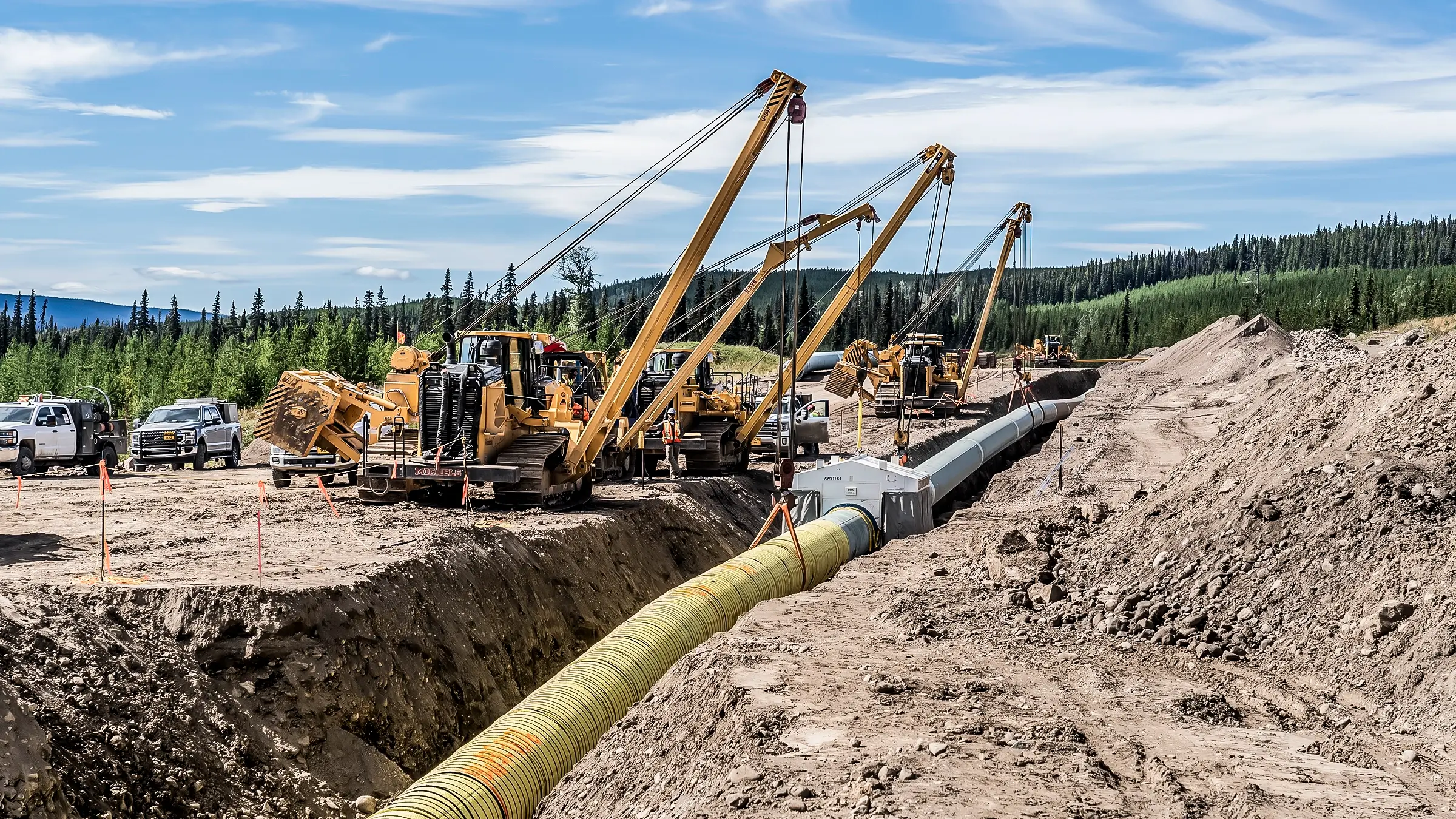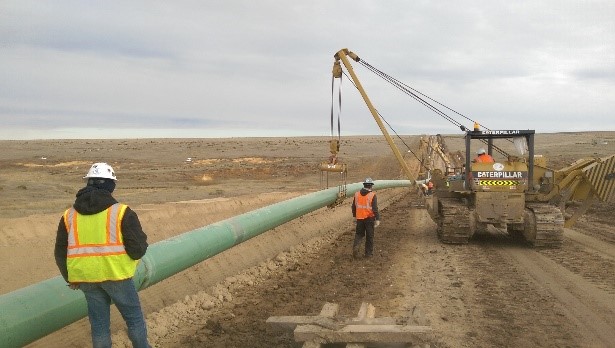Top Tools and Equipment for Professional Work With Creek Pipe Texas oilfield
Comprehending the Basics of Pipes Installation: What You Required to Learn About the Process
Appropriate pipe installation is crucial for any plumbing system. It needs cautious consideration of numerous factors, including material selection and adherence to local regulations. A well-planned layout can prevent issues like pressure loss, while the right tools guarantee efficient signing up with strategies. Even experienced installers can make typical errors. Comprehending these basics can cause a more effective and durable system, prompting a more detailed look at the crucial elements associated with the procedure.
Selecting the Right Products for Pipe Installation
When taking into consideration pipe installation, the option of proper materials is important to making certain longevity and functionality. Numerous materials are readily available, each offering special advantages and factors to consider. For instance, PVC pipes are light-weight, resistant to corrosion, and cost-efficient, making them ideal for household pipes. On the other hand, copper pipes, known for their longevity and ability to hold up against heats, are often preferred for home heating systems.Additionally, galvanized steel pipelines offer strength and resilience, appropriate for durable applications, although they are prone to corrosion over time.For below ground installments, polyethylene pipes are preferred as a result of their versatility and resistance to anxiety breaking. Correct material choice depends on the details demands of the project, including stress scores, temperature variants, and the chemical nature of the fluids being transferred - Creek Pipe Texas oilfield. Ultimately, educated options concerning pipe materials add significantly to the overall success and long life of pipes systems
Comprehending Local Building Regulations and Rules
Exactly how can recognizing local structure codes and laws impact pipe installation? Knowledge with these codes is important for guaranteeing that pipe installations are secure, certified, and effective. Neighborhood building codes describe specific requirements regarding materials, installation techniques, and precaution, which need to be abided by in order to stay clear of possible legal concerns and costly fines.Failure to abide can bring about examinations being stopped working, delays in project conclusion, or also mandated elimination of improperly mounted pipes. On top of that, understanding zoning laws and laws can affect the sort of materials permitted, in addition to the methods utilized for installation.Contractors and homeowners alike need to spend time in evaluating neighborhood regulations prior to beginning any installation task. This aggressive method not only advertises safety and security yet likewise enhances the general quality and sturdiness of the plumbing system, eventually fostering long-lasting functionality and complete satisfaction.
Preparation Your Pipe Layout and Layout
Proper preparation of pipe format and style is vital for achieving an effective plumbing system. This procedure starts with examining the specific needs of the area, thinking about the location of components and home appliances. Accurate measurements guarantee that pipelines are properly directed, minimizing bends and turns that can lead to pressure loss.Consideration of the flow prices and the kinds of products used is important, as different materials have differing toughness and compatibility with plumbing systems. Furthermore, the designer should make up future growths or adjustments to the design, enabling for versatility in case of renovations.Efficient drain and ventilation are additionally substantial parts of the layout, as they stop clogs and guarantee appropriate waste removal. Collaboration with local structure codes ensures compliance and safety, which is vital in any type of pipes installation project.
Essential Tools and Tools for Installation
Successful pipe installation pivots on having the right tools and equipment available. Vital tools include pipe cutters for clean cuts, wrenches for tightening fittings, and pliers for clutching and turning pipes. In addition, a degree assurances pipelines are set up equally, while a measuring tape help in accomplishing accurate lengths.For specific products, a welding torch may be necessary for copper pipelines, while a PVC cutter is essential for plastic options. Safety tools, such as gloves and goggles, shields installers from possible threats throughout the process.A pipe bender can be especially useful for developing smooth contours without compromising honesty, while a torque wrench assurances that connections are protected to the supplier's specifications.Having these devices readily available not just assists in a smoother installation process however likewise adds to the total durability and functionality of the plumbing system. Correct devices is vital in accomplishing durable results.
Techniques for Correct Pipe Joining and Sealing
Attaining a safe and leak-free link in between pipelines requires careful focus to joining and sealing methods. Different methods exist, each suited to different pipe materials and applications (Creek Pipe Texas oilfield). Welding is commonly used for metal pipes, making certain durable links via warm fusion. On the other hand, plastic pipes profit from solvent concrete or blend welding, creating strong, permanent bonds.Threaded links are common in both steel and plastic piping, calling for exact alignment and using suitable sealants, such as Teflon tape or pipe dope, to avoid leakages. Compression installations provide an additional alternative, where mechanical pressure secures the pipelines with each other, making them conveniently took apart for maintenance.Regardless of the approach picked, proper preparation is important. This consists of cleansing pipe ends and guaranteeing they are devoid of debris. Executing these techniques diligently will enhance the longevity and reliability of the pipe system, inevitably contributing to its reliable performance
Typical Errors to Prevent During Installation
Throughout pipe installation, preventing typical errors is important for making certain a trustworthy and reliable system. One regular error is stopping working to measure and reduce pipes accurately, which can bring about incorrect fittings and leaks. Additionally, neglecting to inspect the compatibility of products can cause rust or other damages gradually. see page Poorly protecting joints and links can additionally develop powerlessness in the system, causing potential failures.Another common error is forgeting the importance of slope and drain; pipelines should be set up at the proper angle to assist in correct flow. Inadequate assistance for pipes can bring about sagging and tension, influencing the stability of the system. Ultimately, overlooking regional codes and policies can cause pricey rework and security dangers. By being conscious of these risks, installers can greatly enhance the resilience and performance of pipe systems.
Maintenance Tips for Lasting Pipe Systems
To assure the long life of pipe systems, regular inspections and cleaning are vital methods. These procedures aid identify prospective concerns before they intensify right into significant troubles. Furthermore, employing correct insulation methods can even more protect pipelines from temperature variations and environmental factors.
Normal Inspections and Cleaning
Routine assessments and cleansing are vital for preserving the longevity and efficiency of pipe systems. Consistently examining pipes for signs of corrosion, leaks, or obstructions can help identify potential concerns prior to they escalate into pricey repair work. Cleansing pipes occasionally removes build-up that can limit circulation and advertise deterioration. It is recommended to schedule evaluations at least annually, yet much more regular checks may be essential in high-usage environments. Using professional services for extensive cleaning assurances that all particles is effectively gotten rid of. Additionally, maintaining records of examinations and site link upkeep tasks aids in tracking the system's wellness with time - Creek Pipe roustabout. By focusing on these techniques, building proprietors can enhance the reliability and lifespan of their pipe systems
Proper Insulation Methods
Efficient insulation methods play a crucial duty in maintaining the effectiveness and durability of pipe systems. Proper insulation lessens warmth loss in warm water pipelines and protects against cold in cold water pipelines, substantially reducing power prices and possible damage. Common products used for insulation include fiberglass, foam, and rubber, each offering varying levels of thermal resistance. It is crucial to ensure that insulation is applied evenly, covering all revealed areas without gaps. Furthermore, protecting insulation with appropriate bolts assists maintain its placement and efficiency over time. Regular inspections must be carried out to recognize deterioration, guaranteeing prompt replacements. By implementing these techniques, pipe systems can run successfully and have an extended solution life, ultimately profiting both the environment and the home owner.

Regularly Asked Inquiries
How Do I Figure Out the Appropriate Pipe Size for My Project?
Establishing the suitable pipe size includes examining the project's flow demands, stress specs, and the sort of liquid being moved. Consulting design standards and conducting estimations warranties excellent performance and performance in the installation procedure.
What Are the Ecological Effects of Various Pipe Products?

Can I Install Pipes Myself or Should I Employ an Expert?
The concern of whether to set up pipes independently or hire a professional frequently depends on the individual's skill degree and project intricacy. A specialist might guarantee compliance with regulations and reduce prospective long-lasting problems.

The Length Of Time Can I Anticipate My Pipe Installation to Last?
The longevity of pipe installation differs substantially, generally lasting 20 to 100 years, depending upon materials, installation quality, and upkeep. Normal examinations and correct care can enhance sturdiness and avoid early failings.

What Are the Indicators of a Failing Pipe System?
Indicators of a falling short pipe system consist of regular leaks, unusual water pressure changes, tarnished water, mold growth, and consistent wetness. Property owners should check these signs to avoid pricey damage and assurance timely repairs are made.